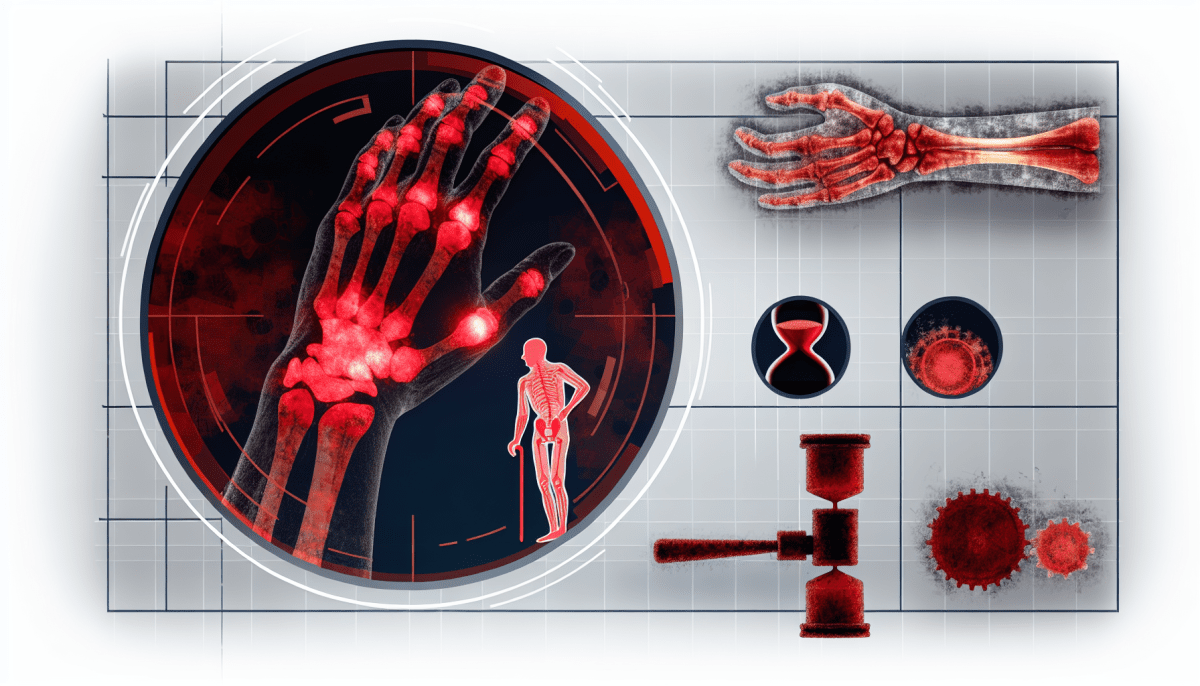Understanding arthritis can feel overwhelming, but it's really just a way to describe inflammation in the joints. So, when we ask, "What is arthritis?" we're talking about a group of more than 100 conditions that can affect your joints, leading to pain, stiffness, and swelling. It's important to know that arthritis isn't just one thing—each type has its own causes, symptoms, and treatment options.
The two most common types of arthritis are osteoarthritis and rheumatoid arthritis. Osteoarthritis usually occurs as we age, where the cartilage that cushions our joints wears down over time. Think of it like a worn-out pair of shoes—eventually, they don't support you like they used to. On the other hand, rheumatoid arthritis is an autoimmune condition where your immune system mistakenly attacks the joints, causing inflammation and pain.
So how did you end up with arthritis? There are several factors at play. Genetics can play a big role; if someone in your family has had arthritis, you might be more likely to develop it too. Age is another factor, since the risk increases as you get older. Your lifestyle choices—like weight, physical activity, and diet—can also influence whether you develop arthritis. Keeping your joints strong and healthy can help keep arthritis at bay.
Recognizing the signs of arthritis is key to managing it. Common symptoms include joint pain, swelling, and a reduced range of motion. If you find yourself experiencing these issues, it's a good idea to consult with a healthcare professional. They can help determine the right course of action for you and ensure you’re on the path to relief.
Common Causes of Arthritis
When you’re asking yourself, “What is arthritis?”, it helps to know some of the common causes behind this condition. Arthritis isn’t just one particular ailment; it’s an umbrella term that encompasses over 100 different types. The most prevalent ones include osteoarthritis and rheumatoid arthritis, and each has its own triggers.
One of the leading causes of arthritis, especially osteoarthritis, is the natural wear and tear of the joints over time. As we age, the cartilage that cushions our joints breaks down, leading to pain and stiffness. If you’ve ever experienced achy knees or hips after a long day on your feet, you might be dealing with the early signs of this.
In the case of rheumatoid arthritis, genetics plays a significant role. If someone in your family has had it, you may be at higher risk. This type is an autoimmune disorder, which means your body’s immune system mistakenly attacks the joints, resulting in inflammation and damage.
Understanding “What is arthritis” and its root causes can be a big help in managing your health. Keeping an eye on your risk factors lets you take proactive steps to protect your joints, whether it's through exercise, weight management, or simply paying attention to any discomfort you might feel.
Recognizing Arthritis Symptoms
Arthritis can be tricky to spot at first, especially if you’re not sure what you're looking for. So, what is arthritis? It’s an inflammation of the joints that can lead to pain, swelling, and stiffness. Let’s break down some of the common symptoms you might experience.
First up, joint pain. This is usually the most noticeable symptom. It can come and go, but when it’s there, it can really impact your daily activities. You might feel it in your knees, hands, or hips, making those simple tasks like walking or opening jars feel like a challenge.
Next on the list is swelling. On days when your joints are acting up, you might notice that they feel puffy or warm to the touch. This happens because your body is fighting off the inflammation, but it can make movement uncomfortable.
Another symptom to look out for is stiffness, especially in the morning or after sitting for a long time. It might take a few minutes to feel limber again. This stiffness can be a big clue when trying to understand, “What is arthritis?” Many people find that gentle stretching or movement helps ease this stiffness.
Lastly, fatigue can come into play. Living with arthritis isn’t just about your joints; it can wear you down mentally and physically. You may feel more tired than usual or find it hard to get motivated. Recognizing these symptoms early on can help you seek the right support and take better care of yourself.
Simple Ways to Manage Arthritis
Living with arthritis can be tough, but there are simple ways to manage the symptoms and make daily life a bit easier. One of the first things you might consider is staying active. It might sound counterintuitive, but gentle exercises like walking, swimming, or stretching can help keep your joints flexible. Even short walks can make a big difference!
Another helpful tip is to pay attention to your diet. Eating a balanced diet loaded with fruits, veggies, whole grains, and healthy fats can help reduce inflammation. Foods rich in omega-3 fatty acids, like salmon and walnuts, are especially great for joint health. Staying hydrated is super important too, so don’t forget to drink plenty of water throughout the day!
Don’t underestimate the power of rest. Mixing in some downtime can give your joints a break and help alleviate pain. Finding a balance between activity and rest is key. Plus, small adjustments in your routine, like using supportive footwear or tools to help with daily tasks, can make a world of difference.
Lastly, consider talking to your doctor about pain management options. They can help you find the right medications or therapies that suit your needs. If you’re wondering, “What is arthritis?” understanding more about it and how it affects your body is the first step towards effective management. You're not alone in this, and with the right tools and support, you can find ways to live comfortably with arthritis.



